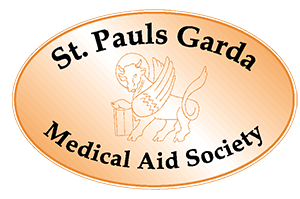This article by Darragh Nolan was published in The Irish Independent in April 2025 – Click here for the full article.
Sat 26 Apr 2025 at 02:30: Photo by Gerry Mooney.
RTÉ sports journalist Eamon Horan has covered many a player’s injury in his time, but this year he’s been off the pitch with one of his own.
Mr Horan has been out of work and off-air for the last three months while recovering from spinal fusion surgery. Although he underwent the procedure earlier this year, he may have unknowingly carried the injury for years – perhaps even decades.
It was while at Tuam Stadium covering a game between Galway and Mayo in 2019 that Mr Horan (49) began to realise something was wrong.
“I had a lot of pain in my left leg, which was unusual. It felt difficult standing up on the sideline and I was shaking it off thinking I’d pulled a hamstring. After that, I had a dull pain in my lower back. I was prone to muscle spasms. Muscles were tightening up. I’d get cramps.
“On occasion, I’d wake up in the middle of the night with a cramp in my leg and have to get up and walk around the bedroom – my wife thought it was nuts.”
When the nerves in his leg started visibly ‘hopping’, the Co Offaly man decided to take action and made his way to the UPMC Sports Surgery Clinic in Santry in Dublin. Physiotherapy didn’t bring him any relief, nor did an injection into the sciatic nerve.
| “I went back and I was referred to Mr Michael Kelleher, a man I really can’t speak highly enough of. He brought me in for a CT scan, MRI, and straight away he spotted I had a broken bone in my lower back.” |
How did I end up with a broken bone in my back that I didn’t know I had?
The broken bone was in the L5-S1 region, a weight-bearing joint crucial for supporting much of the body’s mass and allowing for full range of motion.
With the bone broken and slightly chipped, pressure was being put on the nerves, causing the issues Mr Horan had been having in his leg.
The answer was spinal fusion – a surgery that fuses multiple vertebrae together into one, single bone.
Mr Kelleher had spotted the problem and the procedure was indeed the solution, but the question of the cause remained. Mr Horan, with a 10- to 12-week recovery period after his surgery in February, had time to ponder that question.
“I asked him how it happened, how did I end up with a broken bone in my back that I didn’t know I had? He suspected maybe it was an old sports injury I had when I was a teenager.
He couldn’t pinpoint with 100pc certainty when he sustained the injury, but Mr Horan did remember one soccer game in particular that could have been the culprit.
“I did play a bit of Gaelic football – when you’re from Ballycumber you’ve no choice – and soccer as well. I remember playing a game of soccer and I did a sort of Paul Gascoigne-style lunge. I was in a lot of back pain after that.
“I think it was when I started my Leaving Cert. For a week or two, I ended up sleeping on the floor because I was in a bad way.”
The bar is set high for comebacks from a spinal fusion – Tiger Woods famously had the same surgery in 2017 and won the Masters two years later.
Along with doing plenty of reading about the legendary golfer, Mr Horan said he was struck by the information about recovery online, and the potential pitfalls of “Dr Google”.
The physio told me I needed to chill out for a while because my nerves were oversensitive.
“There’s a lot of stuff on the internet and, ironically, it should come with a health warning. It’s very geared towards an American audience, particularly around recovery. It’s a lot of drama and a lot of pill-popping.
“With the medical professionals I dealt with, they were all about TLC, patience and taking it easy. Six weeks in, I went out to my physio expecting to be doing bands and everything.
“The physio told me I needed to chill out for a while because my nerves were oversensitive after the operation. So I would say to people, don’t follow what’s out there on social media and I would urge caution when you go googling your symptoms.
“People will overcome much sterner diagnoses and much bigger difficulties in their lives, but for me this was a big deal.”
Now at the end of the recovery process and back to work at RTÉ, Mr Horan is getting back into the swing of things just in time for GAA championship season.
“I’m looking forward to getting back to work. I enjoy what I do and I’m in a very privileged position to bring people sporting stories to screen, and I’m looking forward to being back for what is a busy summer ahead in sport.”
| For further information or to make an appointment with a Consultant Neurosurgeon or Spinal Surgeon at UPMC Sports Surgery Clinic, email [email protected] |










